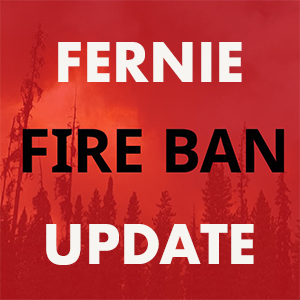By Keith Liggett
Last night I drove to the nearby airport to pick up a friend. As I passed through road cuts leaving town, I noticed snowballs dropping off the steep faces and rolling into the ditch beyond the shoulder of the road. A clear indicative sign of extreme snow instability.
Time for the annual avalanche talk.
This year the deaths are poking along at a normal rate while the snow pack in BC and the Northwestern US is setting up in a deadly mix. Avalanches slide on layers of instability in the snow pack. They fracture when the layers below can no longer support the snow load above. Most often this is a very cold layer that does not consolidate with the rest of the snow pack to create a solid mass. This year the suspect layers (and the most recently fallen) are the soft layers or warm layers.
Think of a layer cake and how, with really creamy icing, you need to be really careful carrying the cake. Any motion out of the level will cause the layers to shift and slide apart.
That’s this year. The layers are ready to slide apart.

In Colorado and Utah, the problem is different. They have not received much snow and the bottom layer of the snow pack turned to depth hoar. Depth hoar forms when the ground is warm when the first snow falls. As the ground cools toward freezing, the heat dissipates into the snow pack and affects the bottom layer. The original snow matrix was bound together by the sharp points of the snow crystals interlocking. As the winter progresses, the points round, the snow crystals consolidate. The layer morphs into little round ice crystals, essentially icy ball bearings. And the little ball bearings take up less space than the original open matrix of snow crystals. The result is a hollow layer on the bottom of the snow pack filled with little ball bearings.
Opps.
Right now in Colorado and Utah about 30% of the snow pack is depth hoar. It is the most dangerous snow pack in over 35 years.
If you haven’t taken an avalanche awareness program, take one.
If you can take the Avalanche Level One, take it.
Visit the Canadian Avalanche Center at www.avalanche.ca
Visit the Northwest Avalanche Center at http://www.nwac.us
Visit the Utah Avalanche Center at www.utahavalanchecenter.org
Visit the Colorado Avalanche Center at www.avalanche.state.co.us/
Visit the every site you find and absorb what they say. It’s all good. And one little tidbit may save your life down the road. Maybe from Utah, Maybe from Canada, maybe from Colorado. One tidbit.
If you can get a knowledgeable friend to take you out, dig a sow pit and show you a little about how the snow sets up, do it.
This is the Avalanche 101 synopsis.
Avalanches happen when gravity overcomes the adhesion of the snow to a slope. The sliding surface can be the ground itself or more commonly a loose unconsolidated sliding layer within the snow pack.
Here are a couple of basic avalanche facts to consider.
More than 90% of all avalanches are triggered by the one of the party caught in the avalanche.
50% of the people buried are dead when the avalanche stops. Dead from the trauma of being tumbled and tossed about by tons of snow. Riding a giant Mix Master ain’t good for one’s health and well-being.
And the other 50%? You pass out after three or four minutes. If your companions don’t pull you out in four to six minutes, your odds of being alive (or rather revived) drop by another 50%. If you are not recovered in fifteen minutes, you’re dead. One in every two or three hundred make it out alive after being buried more than fifteen minutes.
Simple.
Flip a coin. Wait a few minutes. Flip it again. Wait fifteen minutes and put it back in your pocket. You’re dead.
Simple.
Be aware. Be careful. Learn everything you can. Go your local avalanche forecast center for the current local conditions and warnings before you venture into the backcountry. Talk to the ski patrol.
And if the little voice says, maybe not today, listen. Wait a day or even a week.
This piece was written on March 5, 2012 and distributed to a small syndicate of papers for which I write a weekly technical ski column. Since that time, six snowmobilers in the Elk Valley have been involved in avalanches resulting in one fatality and five injuries. The Canadian Avalanche Center issued a warning of extreme instability placing the snow pack conditions as dangerously high at all elevations—above tree line, at tree line and below tree line. If there was ever a time to put away the skins and buy a lift ticket, this is the day. And tomorrow, too.
























